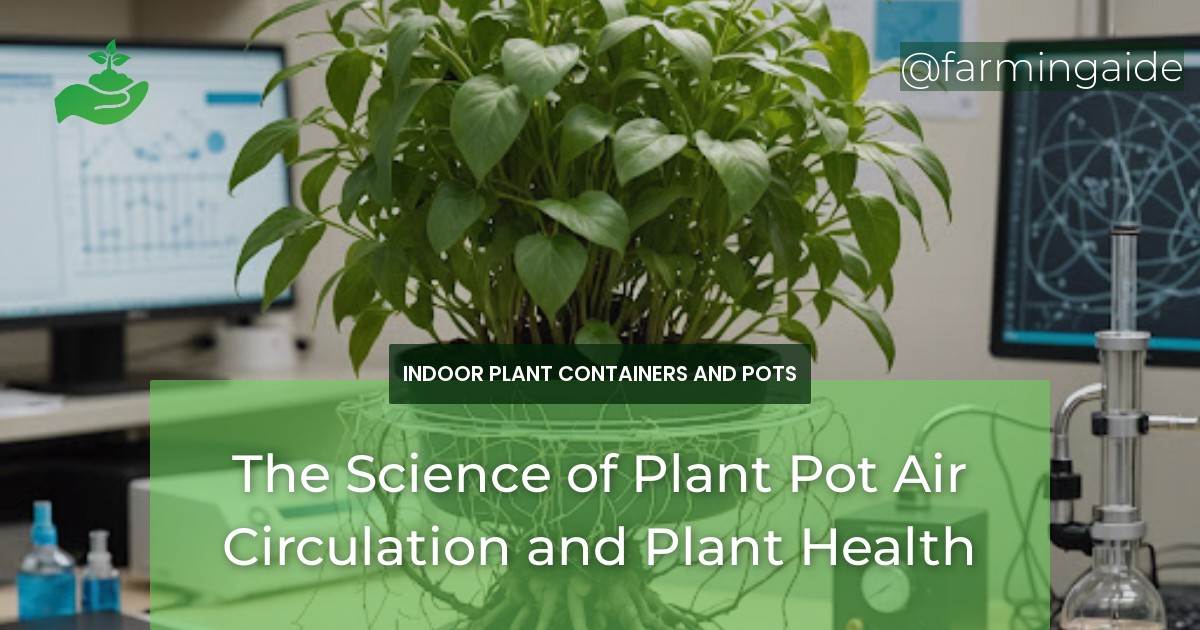When it comes to plant care, many of us focus on the essentials like watering, sunlight, and fertilization. However, there’s another crucial factor that’s often overlooked: plant pot air circulation. Air circulation plays a vital role in maintaining healthy plants, yet it’s often neglected. In this article, we’ll delve into the science behind plant pot air circulation, its importance, and how to improve it for optimal plant health.
Key Takeaways
- Air circulation is essential for healthy plant growth and development.
- Pot size, material, drainage, and aeration holes all impact air circulation.
- Plant species have specific air circulation requirements.
- Techniques like choosing the right pot, proper placement, and regular maintenance can improve air circulation.
- Poor air circulation can lead to root rot, stunted growth, and poor health.
Understanding Plant Pot Air Circulation
Plant pot air circulation refers to the exchange of air between the plant roots and the atmosphere. When air circulates properly, it provides oxygen to the roots, removes excess moisture, and helps regulate soil temperature. This, in turn, promotes healthy root growth, increases plant resistance to disease, and enhances overall plant health.
Air circulation also affects the plant’s ability to absorb nutrients and water. When roots receive adequate oxygen, they can absorb essential nutrients more efficiently, resulting in healthier plants. Conversely, poor air circulation can lead to waterlogged soil, reducing the plant’s ability to absorb vital nutrients.
Importance of Air Circulation for Plant Health
Air circulation is essential for plant health as it helps to:
- Prevent root rot and other diseases
- Regulate soil temperature and moisture
- Provide oxygen to roots for healthy growth
- Enhance nutrient absorption and uptake
How Air Circulation Affects Plant Growth
Air circulation has a direct impact on plant growth and development. When plants receive adequate air circulation, they are more likely to:
- Grow faster and stronger
- Develop a robust root system
- Produce more vibrant, healthy foliage
- Increase resistance to disease and pests
Factors Influencing Air Circulation in Plant Pots
Several factors contribute to air circulation in plant pots, including pot size and material, drainage and aeration holes, and plant species requirements.
ALSO READ
Pot Size and Material
The size and material of the plant pot can significantly impact air circulation. Larger pots with good drainage and aeration can promote healthy air circulation, while smaller pots or those made from poor-draining materials can hinder it.
| Pot Material | Air Circulation |
|---|---|
| Ceramic | Fair |
| Plastic | Poor |
| Terra Cotta | Good |
Drainage and Aeration Holes
Drainage and aeration holes in the pot are essential for air circulation. Holes allow excess moisture to escape, reducing the risk of waterlogging and promoting healthy air exchange.
ALSO READ
Plant Species and Their Requirements
Different plant species have unique air circulation requirements. Some plants, like orchids, require high air circulation, while others, like ferns, prefer more humid environments. Understanding the specific needs of your plants is crucial for optimal air circulation.
Techniques to Improve Air Circulation in Plant Pots
Improving air circulation in plant pots is easier than you think. Here are some techniques to get you started:
Choosing the Right Pot
Select pots with good drainage and aeration holes to promote air circulation. Consider using pots made from breathable materials like terra cotta or unglazed ceramic.
Placement and Environmental Factors
Place plants in well-ventilated areas, avoiding cramped or enclosed spaces. Consider using fans or ventilation systems to improve air circulation.
Regular Maintenance Practices
Regularly inspect and maintain your plants to ensure optimal air circulation. Check for signs of poor air circulation, such as waterlogging or root rot, and adjust your care routine accordingly.
Common Problems Caused by Poor Air Circulation
Poor air circulation can lead to a range of problems, including:
Root Rot and Other Diseases
Poor air circulation can lead to waterlogged soil, creating an ideal environment for root rot and other diseases to develop.
Stunted Growth and Poor Health
Insufficient air circulation can cause plants to become stunted, weak, and more susceptible to disease and pests.
Conclusion and Best Practices for Optimal Plant Health
In conclusion, plant pot air circulation is a critical factor in maintaining healthy plants. By understanding the importance of air circulation, identifying factors that influence it, and implementing techniques to improve it, you can ensure your plants thrive. Remember to choose the right pot, provide proper placement and environmental factors, and maintain regular care practices to promote optimal air circulation and plant health.


